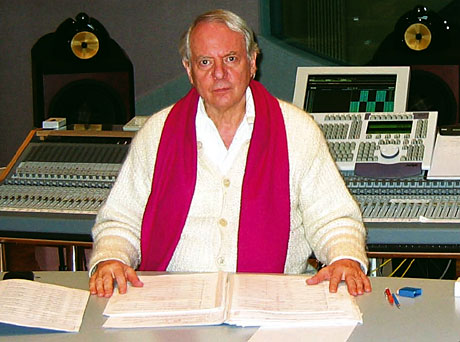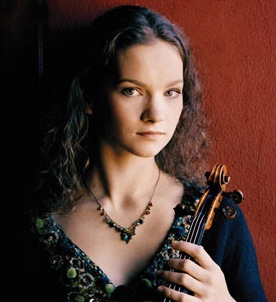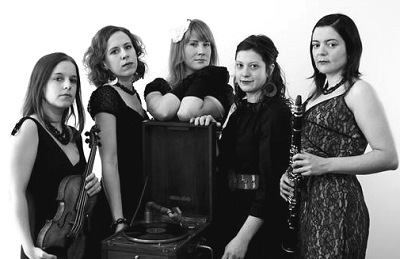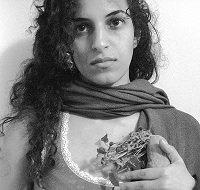
New New Paths in Music presents
An Hispanic Festival
Elebash Recital Hall
Graduate Center – CUNY
New York
On Friday June 5th, New Paths in Music presented a concert of composers from Mexico, Argentina, and Spain: two of each. While the program centered around national identities, it contained music in disparate styles and for varying forces. DAVID ALAN MILLER, conductor of the Albany Symphony, led the New Paths Ensemble, a chamber orchestra of crackerjack contemporary players from the New York area.
ENRICO CHAPELA’S “Irrational Music” was a perfect curtain-raiser. The piece is based on Chapela’s explorations of irrational numbers; but this was in no way indicative of a dry or cerebral surface. On the contrary, “Irrational Music” pulsates with vibrant energy. Its frequent time changes and energetic tutti pileups were deftly negotiated by New Paths. What’s more, Chapela’s music set the stage for the rest of the concert; serving as a foreshadowing of elements grappled with throughout the concert. The evening was often about music of deft negotiations – balancing massed orchestration versus delicate linear writing and intricate metric shifts with visceral “dancing” rhythms.
“Colliding Moments” by ALEJANDRO VIÑAO, was for a smaller subunit of the ensemble. Composed for a 2005 concert in Paris, its chamber textures exhibited a Francophilic ambience. Some of the flourishes played by Christopher Oldfather were reminiscent of Messiaen, while violinist Sunghae Anna Lin, flutist Valerie Coleman, and clarinetist Alan Kay were given Impressionist solo turns. Viñao’s work also demonstrates a supple, varied metric layout; but it is a piece one’s likely to remember for delicate pirouettes rather than colliding timescales.
Spanish composer DAVID DEL PUERTO is also a guitarist; his knowledge of the intricacies of the instrument’s capabilities were well-displayed in “Zephyr.” A guitar concerto cast in a single movement, with fast-slow-fast subsections, it was a delightful showcase for the excellent soloist OREN FADER. Del Puerto excelled at making space in the orchestration for Fader’s solos, supplying fleet scalar passages as well as a central section of considerably supple lyricism. That said, there was plenty for the ensemble in the piece as well; transparent accompaniments were contrasted with powerful verticals. Once again, there was a marked emphasis on frequent, fluidly rendered time changes. “Zephyr” is a persuasive, attractive work; one hopes Fader keeps it in his repertoire.
GABRIEL ERKOREKA’S “Trance” draws upon American trance films as a touchstone, likening their post-surrealistic tone and simulated dream states to the piece’s musical explorations. The result was a tempestuous, expressionist, and volatile tone poem, more illustrative of disordered sleep than the meditative or transported states one often associates with trance in popular culture.
More appealing was GABRIELA ORTIZ’S “Amber Stained Glass Windows.” The piece charts the trajectory of a Monarch butterfly, migrating from the composer’s native Mexico to Montreal. Ortiz is a skillful orchestrator, creating limpid, shimmering textures that made particularly fine use of New Path percussionist John Ferrari’s formidable virtuosity. Miller deserves mega-kudos for preserving abundant clarity in this challenging piece.
Argentinean composer ESTEBAN BENZECRY was fortunate to have violinist ROLF SCHULTE performing the solo part in his “Evocations of a Lost World.” Schulte’s nimble execution of dizzying passage work and his ever present flair for the dramatic helped to distract from Benzecry’s frequently mawkish orchestration. Tribal “drums of death” and overblown winds, designed to be evocative of folk materials, instead gave the concert’s closer a bombastic, hackneyed flavor.
Still, the New Paths Hispanic Festival had a lot going for it; dedicated performances, stylistic diversity, and a program featuring several composers who deserve to be better known stateside.
 San Francisco’s Mission District, home of so much that is cool, is a natural neighborhood for the arts. The San Francisco Community Music Center located at 544 Capp Street is the the Bay Area’s oldest community arts organization and San Francisco’s largest provider of low-cost, high quality music education. In 2008, 2,300 students of all ages, ethnicities and income levels enrolled in Music Center programs and over 16,000 people enjoyed musical performances at no or low cost.
San Francisco’s Mission District, home of so much that is cool, is a natural neighborhood for the arts. The San Francisco Community Music Center located at 544 Capp Street is the the Bay Area’s oldest community arts organization and San Francisco’s largest provider of low-cost, high quality music education. In 2008, 2,300 students of all ages, ethnicities and income levels enrolled in Music Center programs and over 16,000 people enjoyed musical performances at no or low cost.




